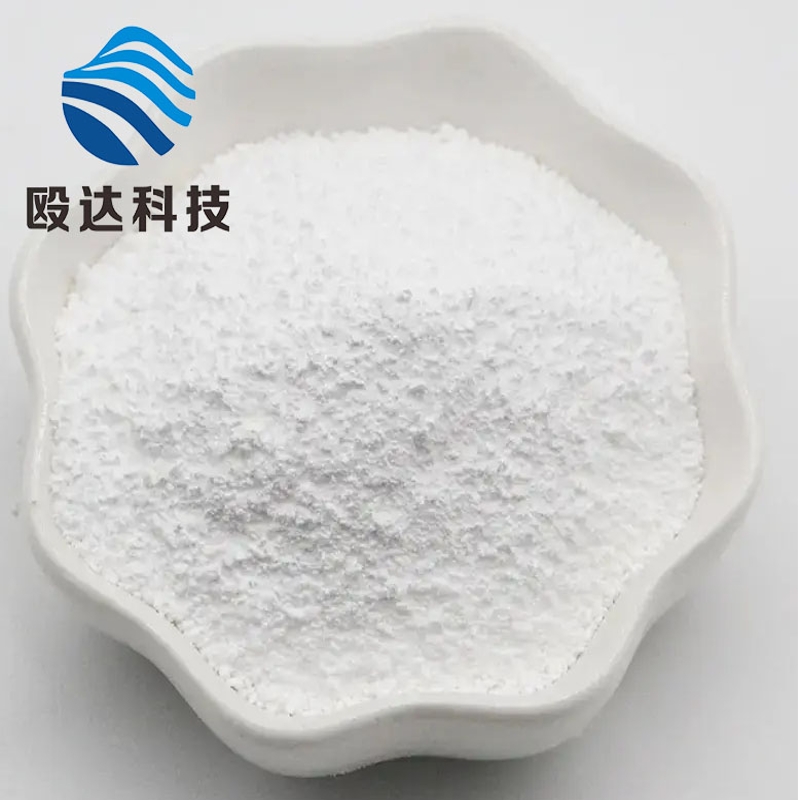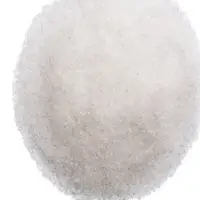-
Categories
-
Pharmaceutical Intermediates
-
Active Pharmaceutical Ingredients
-
Food Additives
- Industrial Coatings
- Agrochemicals
- Dyes and Pigments
- Surfactant
- Flavors and Fragrances
- Chemical Reagents
- Catalyst and Auxiliary
- Natural Products
- Inorganic Chemistry
-
Organic Chemistry
-
Biochemical Engineering
- Analytical Chemistry
- Cosmetic Ingredient
-
Pharmaceutical Intermediates
Promotion
ECHEMI Mall
Wholesale
Weekly Price
Exhibition
News
-
Trade Service
Introduction Entecavir (ETV), tenofovir disoproxil fumarate (TDF) and tenofovir fumarate (TAF) are the first-line anti-hepatitis B virus (HBV) drugs approved by the current international guidelines However, studies have reported resistance to these drugs, especially ETV and TDF
.
So, what is the effect of switching to TAF for patients who do not respond well to these nucleoside (acid) analogues (NA) treatments? This question may be answered in a study published by J Gastroenterol (impact factor 7.
527)
.
Recently, scholars such as Yamashige conducted a retrospective study to evaluate the efficacy of TAF in patients who did not respond well to other NA treatments
.
The study method included 40 patients who did not respond well to other NA treatments.
The inclusion criteria were: ①Although they received other NA treatments for more than 1 year, virological breakthroughs occurred (HBV DNA levels increased ≥1.
0 log IU/mL) and/ Or patients with incomplete viral suppression (≥2.
0 log IU/mL) are defined as "poor response"; ②No previous TAF treatment history; ③Receiving TAF-containing treatment plan for at least 1 year
.
At baseline, due to virological breakthroughs and/or incomplete viral suppression, all enrolled patients switched from other NA treatments to treatments that included TAF and received initial TAF (25 mg) monotherapy or lamivudine (LAM) ) Combined therapy with ETV
.
Since baseline, patients will be followed up every 1-3 months through clinical, biochemical, and virological evaluations
.
Virological response (VR) is defined as the undetectable HBV DNA level (<10 IU/mL) at each follow-up
.
Continuous virological response (MVR) is defined as maintaining HBV DNA <10 IU/mL for more than 6 months, and there is no virological breakthrough after reaching VR until the last follow-up
.
The main outcome is the patient's MVR rate, and the secondary outcome is the patient's VR rate at each follow-up
.
Research results 1.
The MVR rate of the entire cohort was 71.
1%.
The VR rate of patients at each follow-up and the MVR rate of the entire cohort are shown in Figure 1
.
Figure 1 The VR rate of patients from the 12th week to the second year of follow-up and the MVR rate of the entire cohort During the follow-up period, the VR rate increased significantly from 50.
0% (20/40) in the 12th week to 84.
0% (21/25) in the second year.
) (P=0.
002)
.
In the entire cohort, 27 patients (71.
1%) achieved MVR
.
2.
A univariate analysis of the efficacy of TAF and previous TDF response showed that in the entire cohort, poor response to previous TDF treatment was significantly associated with a lower MVR rate (OR 0.
096, 95%CI 0.
015-0.
621, p=0.
014) (Table 1)
.
Table 1 Factors related to MVR in the entire cohort.
Among TDF-naive patients, the MVR rates of LAM-resistant and ETV-resistant patients were 92.
3% (12/13) and 62.
5% (5/8), respectively
.
3.
A univariate analysis of the efficacy of TAF with baseline viral load and HBeAg status showed that in patients who had not previously received TDF treatment, HBeAg positive and high viral load at baseline (HBV DNA≥3.
3 log IU/mL) Significantly correlated with a lower MVR rate (OR 0.
05, 95% CI 0.
005–0.
530, p=0.
013) (Table 2)
.
Table 2 MVR-related factors in patients who have not previously received TDF treatment Among the 7 patients who have previously received TDF treatment, 2 cases have obtained MVR
.
One of the patients who had a virological breakthrough during TDF/LAM treatment obtained MVR after switching to TAF/ETV
.
Research conclusions TAF has high antiviral efficacy in LAM-resistant and ETV-resistant patients, especially in TDF-naïve patients
.
In contrast, TAF has limited efficacy in patients with previous poor TDF responses
.
In addition, baseline viral load and HBeAg status are associated with lower MVR rates
.
However, further studies are needed in more populations to fully evaluate the results of these studies
.
References: Yamashige D, Hosaka T, Suzuki F, et al.
Effectiveness of tenofovir alafenamide for chronic hepatitis B patients with a poor response to the previously used nucleos(t)ide analogs[J].
J Gastroenterol.
2021 Oct 1.
doi : 10.
1007/s00535-021-01826-8.
Contribution email: tougao@medlive.
cn
.
So, what is the effect of switching to TAF for patients who do not respond well to these nucleoside (acid) analogues (NA) treatments? This question may be answered in a study published by J Gastroenterol (impact factor 7.
527)
.
Recently, scholars such as Yamashige conducted a retrospective study to evaluate the efficacy of TAF in patients who did not respond well to other NA treatments
.
The study method included 40 patients who did not respond well to other NA treatments.
The inclusion criteria were: ①Although they received other NA treatments for more than 1 year, virological breakthroughs occurred (HBV DNA levels increased ≥1.
0 log IU/mL) and/ Or patients with incomplete viral suppression (≥2.
0 log IU/mL) are defined as "poor response"; ②No previous TAF treatment history; ③Receiving TAF-containing treatment plan for at least 1 year
.
At baseline, due to virological breakthroughs and/or incomplete viral suppression, all enrolled patients switched from other NA treatments to treatments that included TAF and received initial TAF (25 mg) monotherapy or lamivudine (LAM) ) Combined therapy with ETV
.
Since baseline, patients will be followed up every 1-3 months through clinical, biochemical, and virological evaluations
.
Virological response (VR) is defined as the undetectable HBV DNA level (<10 IU/mL) at each follow-up
.
Continuous virological response (MVR) is defined as maintaining HBV DNA <10 IU/mL for more than 6 months, and there is no virological breakthrough after reaching VR until the last follow-up
.
The main outcome is the patient's MVR rate, and the secondary outcome is the patient's VR rate at each follow-up
.
Research results 1.
The MVR rate of the entire cohort was 71.
1%.
The VR rate of patients at each follow-up and the MVR rate of the entire cohort are shown in Figure 1
.
Figure 1 The VR rate of patients from the 12th week to the second year of follow-up and the MVR rate of the entire cohort During the follow-up period, the VR rate increased significantly from 50.
0% (20/40) in the 12th week to 84.
0% (21/25) in the second year.
) (P=0.
002)
.
In the entire cohort, 27 patients (71.
1%) achieved MVR
.
2.
A univariate analysis of the efficacy of TAF and previous TDF response showed that in the entire cohort, poor response to previous TDF treatment was significantly associated with a lower MVR rate (OR 0.
096, 95%CI 0.
015-0.
621, p=0.
014) (Table 1)
.
Table 1 Factors related to MVR in the entire cohort.
Among TDF-naive patients, the MVR rates of LAM-resistant and ETV-resistant patients were 92.
3% (12/13) and 62.
5% (5/8), respectively
.
3.
A univariate analysis of the efficacy of TAF with baseline viral load and HBeAg status showed that in patients who had not previously received TDF treatment, HBeAg positive and high viral load at baseline (HBV DNA≥3.
3 log IU/mL) Significantly correlated with a lower MVR rate (OR 0.
05, 95% CI 0.
005–0.
530, p=0.
013) (Table 2)
.
Table 2 MVR-related factors in patients who have not previously received TDF treatment Among the 7 patients who have previously received TDF treatment, 2 cases have obtained MVR
.
One of the patients who had a virological breakthrough during TDF/LAM treatment obtained MVR after switching to TAF/ETV
.
Research conclusions TAF has high antiviral efficacy in LAM-resistant and ETV-resistant patients, especially in TDF-naïve patients
.
In contrast, TAF has limited efficacy in patients with previous poor TDF responses
.
In addition, baseline viral load and HBeAg status are associated with lower MVR rates
.
However, further studies are needed in more populations to fully evaluate the results of these studies
.
References: Yamashige D, Hosaka T, Suzuki F, et al.
Effectiveness of tenofovir alafenamide for chronic hepatitis B patients with a poor response to the previously used nucleos(t)ide analogs[J].
J Gastroenterol.
2021 Oct 1.
doi : 10.
1007/s00535-021-01826-8.
Contribution email: tougao@medlive.
cn







